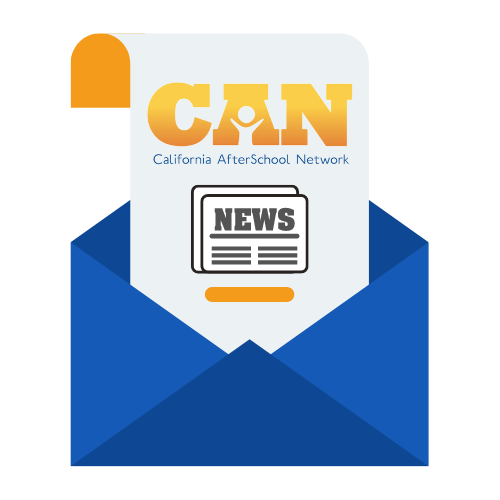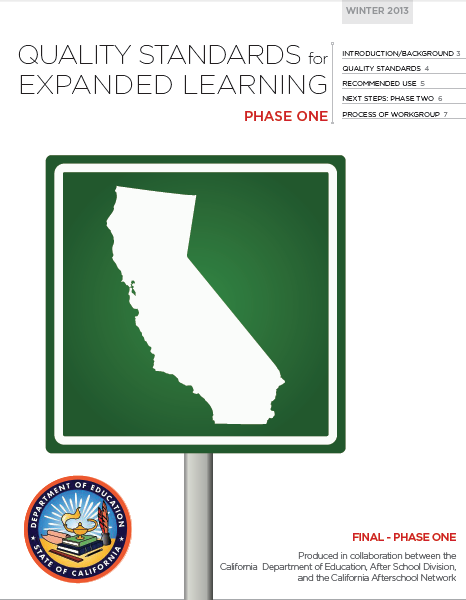Quality Standards for Expanded Learning Programs
The Work Group on Program Quality Standards is charged with making recommendations of examples of standards in practice or indicators for CDE/ASD’s expanded learning quality standards and a matrix of existing quality assessment tools that could be used to measure progress toward quality standards.
Quality Standards for Expanded Learning Programs approved by the California Department of Education After School Division
Safe and supportive environment
The program provides a safe and nurturing environment that
supports the developmental, social-emotional and physical needs
of all students.
Active and engaged learning
Program design and activities reflect active, meaningful and
engaging learning methods that promote collaboration and expand
student horizons.
Skill building
The program maintains high expectations for all students,
intentionally links program goals and curricula with 21st-century
skills and provides activities to help students achieve mastery.
Youth voice and leadership
The program provides and supports intentional opportunities for
students to play a meaningful role in program design and
implementation, and provides ongoing access to authentic
leadership roles.
Healthy choices and behaviors
The program promotes student well-being through opportunities to
learn about and practice balanced nutrition, physical activity
and other healthy choices in an environment that supports a
healthy life style.
Quality Staff
The program recruits and retains high quality staff and
volunteers who are focused on creating a positive learning
environment, and provides ongoing professional development based
on assessed staff needs.
Diversity, Access and Equity
The program creates an environment in which students experience
values that embrace diversity and equity regardless of race,
color, religion, sex, age, income level, national origin,
physical ability, sexual orientation and/or gender identity and
expression.
Clear vision, mission and purpose
The program has a clearly defined vision, mission, goals, and
measurable outcomes that reflect broad stakeholder input and
drive program design, implementation and improvement.
Collaborative partnerships
The program intentionally builds and supports collaborative
relationships among internal and external stakeholders, including
families, schools and community, to achieve program goals.
Continuous quality improvement
The program uses data from multiple sources to assess its
strengths and weaknesses in order to continuously improve program
design, outcomes and impact.
Program management
The program has sound fiscal and administrative practices
supported by well-defined and documented policies and procedures
that meet grant requirements.
Sustainability
The program builds enduring partnerships with the community and
secures commitments for in-kind and monetary contributions.


